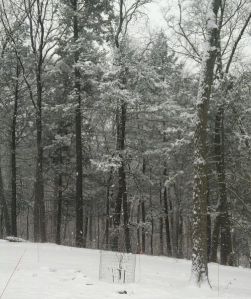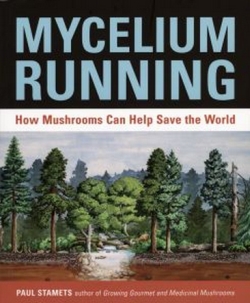
Our raspberry and blackberry bushes in May 2016
This year’s strange weather pattern – a warm winter followed by a cold, snowy spring – killed all the stone fruit in the Hudson Valley but seemed to be just what the berries needed. The wild raspberry and blackberry bushes that encircle our house and line our driveway were loaded with flowers, and all the flowers set fruit. There were so many berries that some of the canes were weighed down to the ground. In seven summers here, we’d never seen anything like it.
As we waited for the berries to ripen, we wondered if we’d have enough time to pick them all. We imagined filling the freezer with quarts of berries and snacking on them all winter long. We especially looked forward to the black cap raspberries – a delicious fruit that you can’t buy anywhere, and the only one that no other animals ever showed any interest in.
The black caps began to ripen about a week early, around June 21. For the first ten days or so, they were relatively plentiful. Berries (like most crops) ripen in a bell-curve timetable over about a month – first a few, then a lot, then bucketfuls, then a lot, then a few. So if this year’s “few” was like last year’s “lot,” the peak was going to be off the charts.
It didn’t work out that way.
Berries suddenly started disappearing from the bushes. A bush full of almost-ripe black caps would be empty the next day, no matter how early I went out to pick. So the second week was no better than the first, the peak didn’t happen at all, and, much sooner than I would have expected, we were back down to a few. Really few. This morning I picked the last couple of stragglers that were still hanging onto the bushes. We did manage to put a few quarts in the freezer (at least I think they’re still there), but overall, I don’t think we even got as many as last year.
Fallout from a mast year
What happened? Last fall was the “mast year” for oaks – the one year out of every three or four when oaks produce most of their acorns – so the little forest critters had plenty to eat all winter and produced lots of babies this spring. This includes chipmunks, squirrels, field mice and other rodents, but I doubt they were the worst culprits, because most of the missing berries were too high for them to reach. (I did see a chipmunk eating one of our strawberries, holding it in his little paws and munching with great delicacy, but strawberries are all at ground level.)
Wild turkeys are the most likely candidate, I think. Acorn-eaters, they too are abundant this year, and their poults (chicks) are nearly grown at this season. They can jump or fly high enough to reach any berries, and they’ve become quite bold about coming close to the house.
Inviting competition
But I’m wondering whether wild turkey abundance isn’t the only factor at work. Could the sheer number of black caps have attracted birds that wouldn’t otherwise have bothered with them?
This thought brought back an article I read several years ago called “Ecological Resilience, Biodiversity, and Scale,” by Garry Peterson, Craig R. Allen and C.S. Holling (two zoologists and an ecologist). (Yes, I read stuff like that for fun.) Here’s what they say, talking about insect outbreaks:
If a particular insect becomes more common, species that would not normally exploit it may switch to using it. This occurs as the increasing relative abundance of a resource makes its utilization less costly… As resources become increasingly aggregated, they become available to larger animals that are unable to exploit dispersed resources efficiently.
Birds have to find enough to feed themselves without using up all their energy. So tiny birds focus on tiny prey in a small area, bigger birds focus on bigger prey over a larger area, and so forth. A few small black caps on a bush may not be “worth a detour,” as Michelin would put it. But dozens of canes groaning under the weight of berries could make a tempting target for a wider-ranging bird.
 The other morning, sitting out on the patio, we heard an unfamiliar bird call and looked up to see a glorious streak of red – a scarlet tanager at the top of a tree. It’s the first time we’ve ever seen one here. Tanagers have never met a berry they didn’t like, apparently; the Cornell ornithology lab says that among their favorites are “blackberries, raspberries, huckleberries, juneberries, serviceberries, mulberries, strawberries, and chokeberries.”
The other morning, sitting out on the patio, we heard an unfamiliar bird call and looked up to see a glorious streak of red – a scarlet tanager at the top of a tree. It’s the first time we’ve ever seen one here. Tanagers have never met a berry they didn’t like, apparently; the Cornell ornithology lab says that among their favorites are “blackberries, raspberries, huckleberries, juneberries, serviceberries, mulberries, strawberries, and chokeberries.”
So there’s the upside to sharing the berries: We got a chance to see this beautiful bird. And berries are only an appetizer for the tanager. The main course is always bugs. I hope that, during its visit, the tanager found lots of bugs to eat – preferably, the ones that feed on our vegetable garden.










